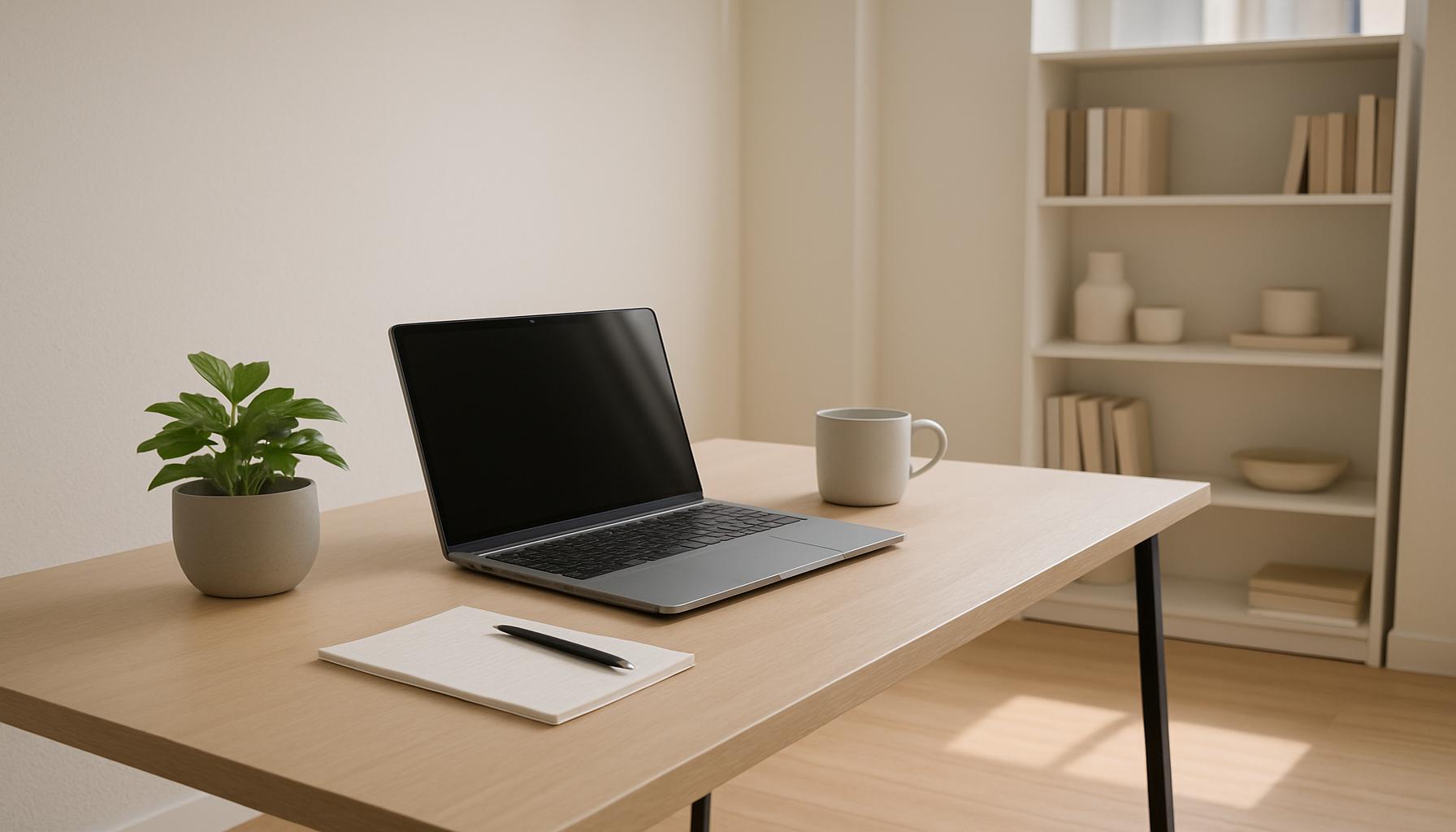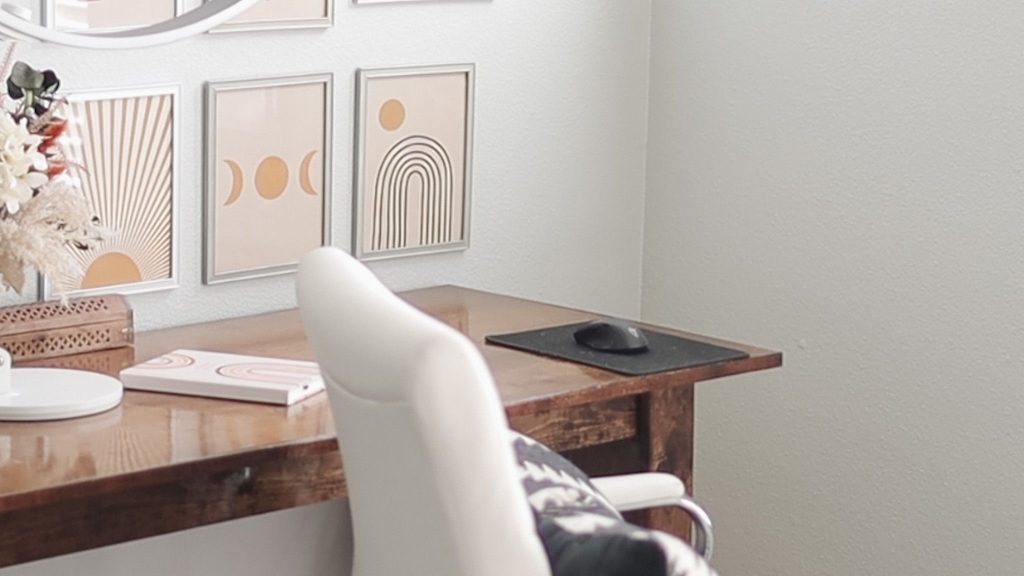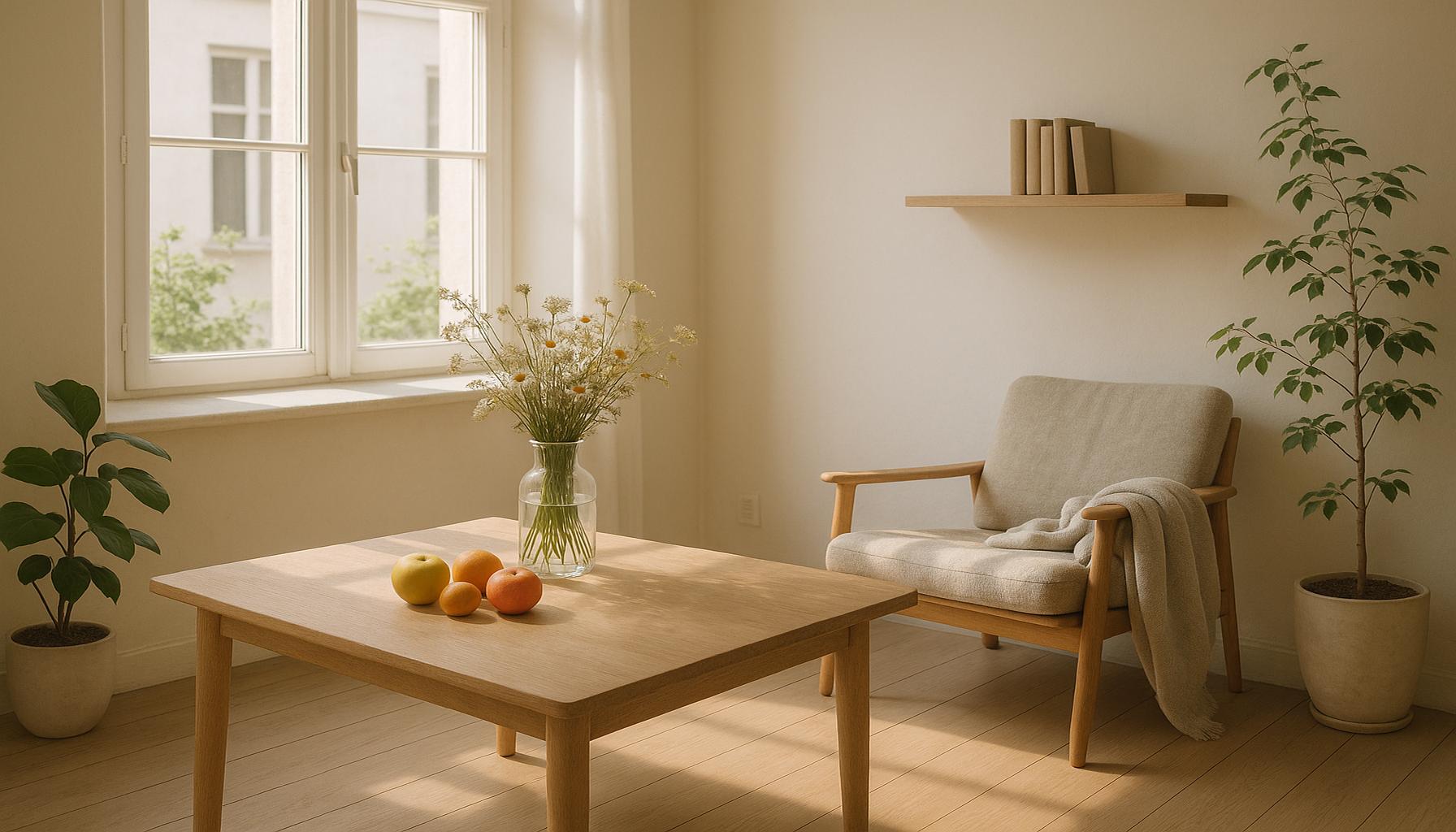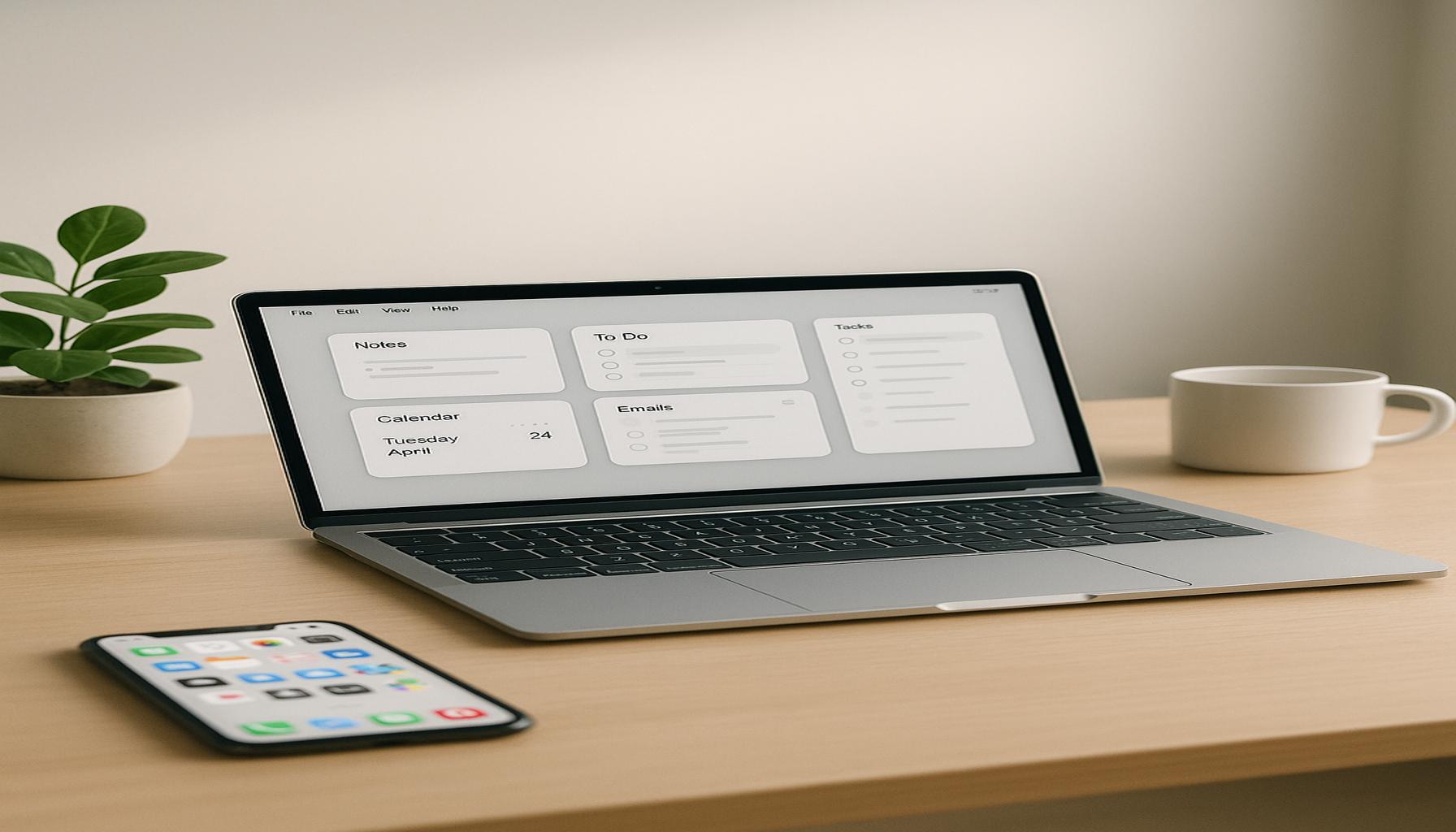Simplicity in Organization: Strategies for a Minimalist Workspace

The Transformation of Modern Workspaces
In an era where multitasking is the norm and distractions abound, many individuals are discovering the profound impact of a minimalist workspace. The concept of minimalism goes beyond just having fewer items; it encompasses a holistic approach to creating an environment that fosters focus, clarity, and efficiency. A minimalist workspace often leads to increased productivity and reduced stress—elements that are crucial in today’s demanding work climate.
Defining Minimalism in Your Workspace
So, what constitutes a minimalist workspace? While the specifics may vary from person to person, several key elements are commonly found:
- Decluttered surfaces that are free from unnecessary items allow the mind to breathe and focus on the task at hand. Studies show that physical clutter can lead to mental clutter, making it harder to concentrate.
- A focus on essential tools that enhance efficiency, such as high-quality notebooks, a reliable computer, or a functional chair, rather than items that contribute to a chaotic environment.
- A carefully curated color palette that promotes calmness—soft blues or greens can create a serene atmosphere conducive to creative thinking while reducing eye fatigue.
Beyond visual aesthetics, the allure of a simplified environment lies in its ability to foster a clearer mindset. Research supports the idea that a clutter-free space can enhance concentration, leading to more efficient task completion. For instance, a study conducted by Princeton University found that excessive visual stimuli can tax the brain’s processing abilities, ultimately hampering performance on tasks.
Strategies for Implementing Minimalism
Adopting minimalism in your workspace doesn’t have to be overwhelming. Here are several strategies to create an environment that nurtures productivity:
- Digital decluttering: Organize your folders, delete unnecessary files, and streamline your email inbox to minimize distractions. Tools like digital note-taking applications can also reduce paper clutter.
- Optimizing physical layouts: Arrange your workspace in a way that prioritizes frequently used items. This can involve investing in smart storage solutions that keep clutter hidden while still allowing easy access to essential tools.
- Regular reflections: Set aside time to evaluate what items and tools serve your workflow. If something no longer contributes positively, consider removing it from your space.
By embracing these minimalist methods, you might discover that less truly is more. The ultimate goal of creating a balanced workspace is to fulfill both your practical needs and your desire for tranquility. As you embark on this journey toward minimalism, remember that each workspace is unique—the strategies that work for you may differ from those that work for others.

Join us as we dive deeper into effective strategies for achieving a minimalist workspace that not only looks refined but also significantly enhances your workflow. The transition can be enlightening, leading you to a profound appreciation for simplicity and functionality in your professional life.
DIVE DEEPER: Click here to discover the power of minimalism
Embracing Minimalism: A Path to Enhanced Focus and Productivity
Implementing minimalism in the workspace is not merely a trend; it’s a strategic move toward achieving greater efficiency and reducing the stress associated with a cluttered environment. As professionals in the United States and around the world navigate increasingly demanding workloads, the realization that a simple, organized workspace can contribute to overall well-being is gaining traction. Indeed, the simplicity of organization offers a roadmap to enhance focus and cultivate creativity.
The Psychological Benefits of a Minimalist Workspace
Research has consistently shown that a minimalist workspace can significantly influence an individual’s productivity and mental clarity. Engaging with a clean, uncluttered environment can foster positive psychological effects. According to a study by the American Psychological Association, individuals who work in minimalist surroundings report lower stress levels and greater job satisfaction. Here are a few psychological benefits that a simplified workspace can provide:
- Increased concentration: A decluttered space minimizes distractions, allowing for deeper focus on tasks. When the mind is not busy processing unnecessary visual clutter, it can engage more effectively with the work at hand.
- Enhanced creativity: With fewer distractions, individuals are often able to think more creatively. A minimalistic approach encourages innovative problem-solving, as it creates an open mental space.
- Improved mood: A well-organized environment can positively affect mood. The sense of control stemming from a clutter-free workspace often leads to increased motivation and enthusiasm for work.
Moreover, minimalism in organization can liberate individuals from the overwhelming feelings associated with a cluttered desk or workspace. For many, the process of organizing and simplifying becomes a therapeutic exercise in itself, providing a sense of accomplishment and purpose.
Practical Steps toward Minimalism
Making the transition to a minimalist workspace can seem daunting, but by implementing a few practical strategies, the process can be both manageable and rewarding. Here are some effective steps to consider:
- Identify and remove non-essential items: Take a close look at your workspace and question the necessity of each item present. If something does not directly contribute to your productivity, consider removing or relocating it.
- Invest in multifunctional furniture: Choose furniture that offers storage solutions without compromising on style. Desks with built-in shelves or drawers can help keep essential tools within reach while maintaining a clean look.
- Establish a daily cleaning routine: Set aside a few minutes at the end of each day to tidy your workspace. Consistent maintenance can prevent clutter from accumulating.
By thoughtfully selecting and arranging your workspace components, you can create an environment that maximizes both your functional and aesthetic needs. This nuanced approach to space curation not only transforms your work environment but also solidifies your commitment to an efficient, engaging, and inspiring workspace.
As you delve deeper into the benefits of minimalism, you may uncover additional techniques tailored to your unique work routine. The journey toward a simpler workspace may reveal new pathways to productivity and personal fulfillment.
Simplicity in Organization: Strategies for a Minimalist Workspace
Embracing simplicity in organization promotes not just a clean physical space but also aids in mental clarity and productivity. By adopting a minimalist workspace, individuals can experience numerous advantages that foster a more effective working environment. Below, we explore key advantages of this approach that can inspire readers to rethink their workspace management.
| Category | Advantages |
|---|---|
| Enhanced Focus | A minimalist workspace reduces distractions, allowing for greater concentration on tasks at hand. |
| Improved Efficiency | With fewer items to manage, workflow is streamlined, making it easier to find tools or documents quickly. |
The adoption of a minimalist workspace often directly correlates with increased productivity. A clutter-free environment encourages a sense of calm, reducing stress and improving work output. As these strategies are employed, individuals may also discover that their creativity flourishes when surrounded by simplicity. To delve deeper into the transformation a minimalist workspace can bring, continue exploring additional strategies that enrich both personal and professional life.
DIVE DEEPER: Click here to learn about the power of minimalist organization
Creating Functional Zones: The Art of Workspace Layout
Designing a minimalist workspace goes beyond simply removing clutter; it involves strategically planning your environment to enhance efficiency and comfort. One effective strategy is to create functional zones within your workspace. This organization method allows you to compartmentalize tasks and allocate distinct areas for different functions, ultimately streamlining your workflow.
Define Your Zones
To structure your workspace effectively, start by identifying the key activities you engage in throughout the workday. Common functional zones include:
- The Work Zone: This is the core area where the bulk of your productive work occurs. Equip this space with essential tools—like your computer, notepads, and pens—while ensuring that distractions are minimal.
- The Collaboration Zone: If you frequently engage with colleagues or clients, designate an area for collaborative work. This can include comfortable seating and tools such as whiteboards or digital screens that foster brainstorming and discussion.
- The Relaxation Zone: Every workspace should feature a space for short breaks. Having a designated area for relaxation can help recharge your focus and creativity. This could be a cozy chair or a small nook with relaxing visuals or greenery.
By clearly designating areas for different tasks, you can make your workspace more organized and intuitive, allowing you to effortlessly transition between activities.
Utilize Vertical Space: Optimizing Organization
In a minimalist workspace, vertical organization can be a game-changer. Many professionals underestimate the potential of vertical space in their environments. Utilizing vertical shelves and wall organizers can free up valuable desk space and reduce clutter. Consider these options:
- Wall-mounted storage solutions: Install shelves or pegboards to store office supplies, files, or even decorative items that inspire creativity. These solutions not only keep items within reach but also add character to your workspace.
- Vertical file organization: Instead of stacking papers or documents horizontally on your desk, invest in a vertical file organizer. This minimizes spatial clutter and makes accessing important documents much easier.
Vertical space benefits from the minimalist ethos by emphasizing a clean look while maintaining functionality. Additionally, it can inspire a higher level of engagement with your surroundings, as items displayed at eye-level can serve as motivating reminders of your goals.
Embrace Technology: Digital Minimalism
Another vital aspect of minimalism in organization is embracing technology that facilitates flexibility and efficiency. The concept of digital minimalism encourages individuals to assess and streamline their digital tools for enhanced productivity. Here are a few strategies:
- Consolidate your apps: Evaluate the software and applications you use daily. Aim to streamline your toolset by consolidating functions into fewer applications, reducing the chance of distraction.
- Organize digital files: Similar to a physical workspace, a well-organized digital environment is crucial. Create a structured folder system on your devices or utilize cloud storage solutions to minimize the digital clutter while ensuring easy access.
By tackling both physical and digital disparities, you can create a cohesive minimalist workspace that energizes your workflow.
With these strategies in hand, individuals can craft a workspace that not only attracts focus and enhances productivity but also aligns seamlessly with the tenets of minimalism. Exploring new methods of organization allows for personalized adaptations and potential breakthroughs in work experience, encouraging professionals to thrive amid the demands of their careers.
DISCOVER MORE: Click here for insights on minimalist organization
Conclusion
As we wrap up our exploration of simplicity in organization within the context of a minimalist workspace, it’s clear that intentional design and thoughtful strategies can significantly enhance productivity and well-being. Embracing a minimalist approach—whether through the establishment of functional zones, effective use of vertical space, or the adoption of digital minimalism—empowers individuals to create environments that reflect clarity and purpose.
By defining specific areas for work, collaboration, and relaxation, you transition from a chaotic space to one that is not just functional but also harmonious. The importance of minimizing distractions while maximizing efficiency cannot be overstated; each individual’s workspace should resonate with personal style and professional objectives. Additionally, as our lives become increasingly digital, reassessing and streamlining our tools becomes essential. This digital decluttering serves to enhance focus, allowing us to direct our energy to what truly matters.
Ultimately, a minimalist workspace is not merely about aesthetics—it’s about cultivating a mindset that encourages creativity, efficiency, and a sense of calm amidst the bustling demands of modern work life. The journey towards simplicity in organization invites ongoing refinement and adaptation, suggesting that by embracing these strategies, it’s possible to lay the foundation for a more fulfilling and productive career. So, take inspiration from the insights shared here and delve deeper into your own workspace organization. Strive for simplicity, and watch how it transforms your professional experience.


